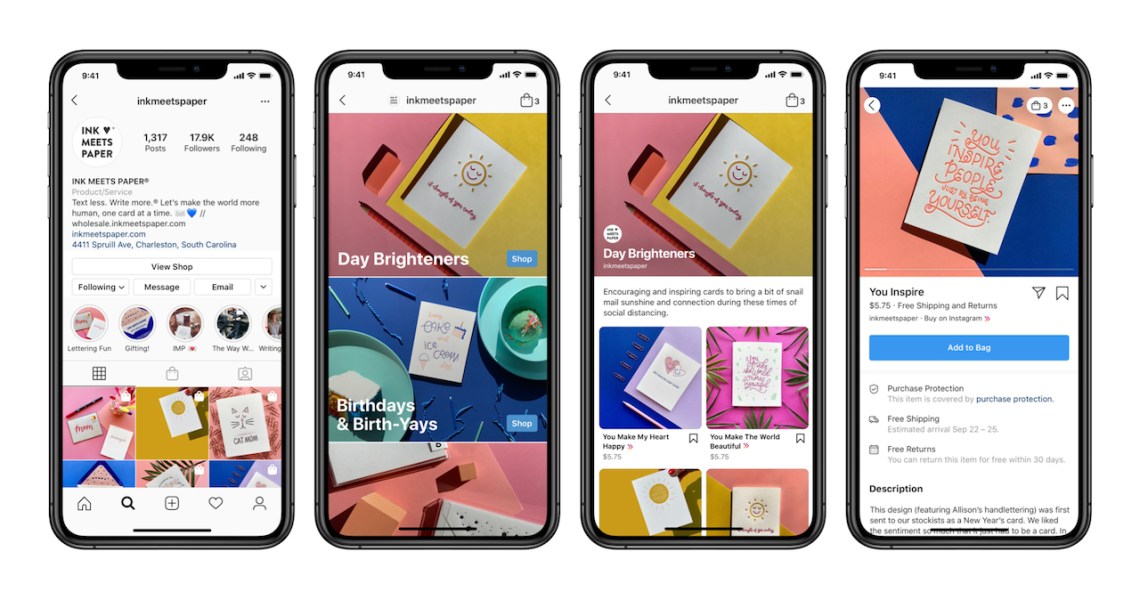Just over two years after launching Instagram Shop, the social media platform is removing the tab from its home page.
In an announcement on Monday, Instagram said the Shop tab will disappear from the feed starting in February, with the Reels tab taking its place and the New Post button moving to the center where Reels once was.
According to an Instagram rep, “You will still be able to set up and run your shop on Instagram as we continue to invest in shopping experiences that provide the most value for people and businesses across feed, stories, reels, ads and more.” But a report from The Information indicates that Instagram will further pull back from Shop in the coming months, including dropping personalized recommendations from the top of the Shop feed. Instead, Instagram will further prioritize advertising, over commerce, in the coming months.
Instagram Shop originally launched in 2020 during the height of the pandemic, when overall e-commerce sales were up significantly. Instagram head Adam Mosseri said at the time that e-commerce would be the future of Instagram.
But in the last two years, Instagram’s offering never caught on in the way the company had hoped, especially among larger companies. Brands like Ray-Ban, Victoria’s Secret and Anthropologie are among the large brands that regularly promote their Instagram Shop presence and regularly update their product catalog, but the feature is largely dominated by smaller brands and individual sellers.
Larger brands prefer selling via their own online channels where they have more control of corresponding data. A Hubspot survey from April 2022 found that the lack of data brands received from sales on Instagram Shop, compared to their direct channels, was one of the major complaints about Instagram’s e-commerce tools along with the 5% fees on each sale.
In 2021, Instagram added the ability to buy ads on the Shop tab. While the company doesn’t post specific revenue figures for its commerce business, Glossy’s sister site Digiday reported last year that American companies like Instagram, Facebook and TikTok would be pulling back from social commerce based on disappointing results. Meanwhile, the Chinese version of TikTok, Douyin, has seen success with social commerce, achieving more than $3 billion in sales in the first half of 2022.
“The granular data Meta has on its own app enables it to see how users are engaging in commerce via the platform, and it’s possible that the Shop button got the chop because it was under-utilized,” said Randy Nelson, senior director of market insights at data company Data.ai. “Trimming the fat is crucial for Instagram, whose leadership has expressed its intent to rework the app for faster, more intuitive sharing of content.”
Jane.com, the popular online boutique marketplace which showcases finds from thousands of women-owned businesses across the country, found Instagram Shopping to be a cost-effective tool to boost brand awareness and engagement, especially with a younger demographic. JP Knab, chief marketing officer at Jane said that while it allowed customers to quickly shop and checkout, the feature required additional analysis of when a post should link to Instagram Shopping or directly to Jane.com. Jane has being been featured in unique live and drop events on Instagram with fashion experts like Tri Dao.
For larger brands like Jane, which see Instagram Shop as an extension of an Instagram-centered discovery and marketing play, Instagram’s shift isn’t expected to prove impactful. However, individual sellers and smaller brands like Soludos that rely on Instagram shop for revenue will need to adjust.
Some brands have said they’re still committed to using Instagram Shop.
“We very much value our partnership with Meta and the IG platform,” said Toral Patel, vp of marketing and commerce at the beauty brand Kopari. “While Shopping may not be a key priority for Meta at this time, we still find that it’s an amazing platform to discover, inspire and learn, and we’ll continue to focus our energy on creating content that does just that.”




